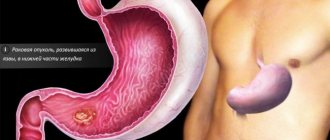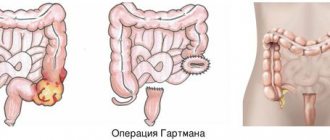Antibacterial drugs
If it has been established that the etiological factor of diarrhea is a bacterial pathogen, patients are advised to prescribe antibacterial agents. For acute forms of diarrhea, antibacterial drugs and antimicrobial agents from the group of quinolones, fluoroquinolones, nitrofuran derivatives, sulfonamide drugs, and antiseptics are used. It is best to use products that do not disturb the balance of intestinal microflora. As an alternative therapy, bacterial preparations (Linex, Enterol, Bifi-form) are used. After completion of antibacterial treatment, patients are advised to continue taking bacterial agents.
What tests can your doctor order?6
- Bacteriological examination of stool. The purpose of such a study is to identify the causative bacteria and determine its sensitivity to antibiotics. The timing of the analysis depends on the type of bacteria.
- General blood analysis. It helps to identify signs of the inflammatory process and obtain indirect information about what was the possible cause of the disease - bacteria or viruses.
- Virological examination of stool. Polymerase chain reaction (PCR), immunochromatography and other methods are used. In the second case, results can be obtained on the same day; PCR may take several days.
Treatment
- Replenishing fluid volume - drinking plenty of fluids, taking oral rehydration agents (Regidron, Gidrovit), in case of severe dehydration, administering fluids (Reamberin, Ringer's solution, saline solution).
- Antidiarrheals - Loperamide (Imodium), Smecta (for pregnant women and newborns), Enterol. Drugs in this group are prohibited for bloody diarrhea and salmonellosis.
- To relieve pain and spasms - antispasmodics (for example, No-shpa).
- To improve food digestion - enzymes (Mezim forte, Pancreatin, Creon).
- In case of poisoning - activated carbon (1 tablet per 10 kg of body weight), in severe cases, infusion of Hemodez.
- For a bacterial infection , antibiotics based on culture results or broad-spectrum drugs.
- Restoration of intestinal microflora - probiotics.
- Diet - eggs, rice porridge, low-fat broths, white bread croutons, lean meat/steamed fish. Lemonade and juices, salty/spicy/fried/fatty foods, fresh fruits and vegetables, legumes, baked goods and canned food are prohibited.
Self-administration of antidiarrheal drugs and, especially, antibiotics can aggravate the course of infectious diarrhea.
An ambulance should be called if:
- signs of dehydration appeared - extreme thirst, decreased blood pressure, decreased amount of urine, apathy and severe weakness;
- Abdominal pain increases - appendicitis is possible, requiring urgent surgery;
- feces streaked with blood or black - a high probability of bleeding;
- diarrhea due to high body temperature - an intestinal infection should be excluded;
- persistent diarrhea in young children and frail elderly people is a risk of developing severe dehydration.
Contact the First Family Clinic of St. Petersburg: an examination using high-precision equipment will help you quickly identify the cause of the ailment and assess the severity of the pathological process, and an experienced doctor will prescribe an effective course of treatment for diarrhea.
Differential diagnosis
To carry out a correct differential diagnosis, it is very important to take into account the presence of other symptoms accompanying intestinal dysfunction.
- Pain projected in the peri-umbilical region is a sign of pathology of the small intestine.
- Painful sensations in the right iliac region usually indicate pathological processes in the terminal ileum or in the cecum.
- Lesions of the sigmoid colon are characterized by cramping pain that intensifies during defecation.
- Changes in the rectum may be indicated by pain that intensifies after defecation and radiates to the sacrum.
- With pancreatic cancer and chronic pancreatitis, girdle pain in the upper abdomen is often observed.
- Fever is a common symptom of infectious diarrhea, which also occurs with inflammatory changes in the intestine (ulcerative colitis, Crohn's disease), malignant tumors, and diverticulitis.
- Weight loss is not typical for irritable bowel syndrome and functional diarrhea, but may be a sign of colorectal cancer, chronic inflammatory bowel disease or malabsorption syndrome.
- With chronic adrenal insufficiency, there is a risk of developing hyperpigmentation of the skin and hypotension.
- The presence of systemic signs of damage (erythema nodosum, arthritis, primary sclerosing cholangitis, iridocyclitis) facilitate the differentiation of Crohn's disease and ulcerative colitis; periodic facial hyperemia suggests the presence of carcinoid syndrome in the patient.
- Zollinger-Edison syndrome is characterized by a combination of persistent diarrhea and frequent relapses of gastroduodenal ulcers.
A very important factor in the differential diagnosis of diarrhea is the correct and clear collection of anamnesis from the patient. In most cases, these phenomena occur after errors in nutrition or ignoring hygienic principles.
Very often, diarrhea is provoked by taking medications (antibacterial, antiarrhythmic, antitumor drugs, some antidepressants and tranquilizers).
To clarify the diagnosis, the patient undergoes a number of additional studies (laboratory tests, ultrasound, endoscopic studies, and sometimes an x-ray).
Colon lesions
Lesions of the colon are characterized by stool 4-6 times a day with a small amount of feces (often mixed with blood), while the patient complains of abdominal pain and tenesmus. Very often, the urge to defecate can result in the separation not of feces, but of lumps of mucus, sometimes mixed with blood. When the anal sphincter is damaged, patients report fecal incontinence. A variant of this dysfunction may be the appearance of fecal particles on the underwear, instead of the expected release of gases, observed with malignant neoplasms of the rectum.
The younger the child, the greater the likelihood of developing severe complications3.
In infants and young children, diarrhea syndrome accompanies many diseases and leads to various organic intestinal lesions and functional disorders.
According to the nature of the course, diarrhea is divided into acute (up to 12 weeks) and chronic (more than 12 weeks)1.
Prevalence and causes of diarrhea
Acute diarrhea in children is often caused by infections; chronic diarrhea syndrome is usually associated with non-infectious factors4.
In terms of prevalence, acute intestinal infections (AI) in childhood rank second after ARVI. And this morbidity structure has persisted over the past 10 years5. Moreover, it is difficult to assess the real picture, since erased and mild forms of diseases are usually not registered.
According to statistics, in the Russian Federation in 2022, about 520 thousand cases of acute intestinal infections were recorded among children under 14 years of age5. Such high rates are due to a wide range of pathogens, a variety of transmission routes and limited possibilities for specific prevention.
Chronic diarrhea
Chronic diarrhea is a symptom of many gastrointestinal diseases. Chronic pancreatitis is characterized by girdling pain in the upper abdomen radiating to the left half of the chest. The pain is accompanied by bloating, steatorrhea, foul-smelling stools, as well as nausea and vomiting that does not bring relief. Exacerbations of the disease appear after consuming fatty, spicy, smoked foods and alcohol.
Bloody diarrhea, accompanied by abdominal pain, anemia and hyperthermia, joint pain, may be a sign of ulcerative colitis, pseudomembranous colitis, Crohn's disease, and intestinal tumors. Tarry diarrhea indicates bleeding from the upper gastrointestinal tract.
The diagnosis of “functional diarrhea” in irritable bowel syndrome is made if infectious etiology and all other possible diseases are excluded. This condition can develop at a young age and manifest itself against a background of depression and stress. Clinically manifested by pain, bloating, rumbling and abnormal stool type pseudodiarrhea (fast stool, stool consistency is formed).
Clinical features of diarrhea
It is enough to simply identify the signs of diarrhea yourself. Clinically, it manifests itself as sharp pain in the stomach and intestines, frequent (more than 3 times a day) loose, watery stools, sometimes accompanied by vomiting or nausea. Features of the clinical manifestations of diarrhea depend on the etiological factors and the disease that provoked this syndrome. In severe forms of diarrhea caused by infectious and viral pathogens, febrile phenomena (hyperthermia, chills, convulsions) may occur. Patients also note weakness and deterioration in general condition.
Etiology and pathogenesis of diarrhea
Severe intoxication of the body contributes to increased secretion of water with sodium ions into the intestinal lumen, which in turn contributes to the dilution of stool.
According to pathogenesis, diarrhea is divided into several types:
- osmolar diarrhea: occurs when the intestinal contents are hyperosmolar. The cause of diarrhea may be viral infections (retroviruses, rotaviruses), the presence of intracellular parasitism by coccidia, or the use of saline laxatives. The presence of viral infections provokes damage to enterocytes, as a result of which membrane digestion is disrupted. Excessive amounts of non-fermentable substances (peptides, disaccharides, etc.) are a predisposing factor to the development of this type of diarrhea. Clinically manifested by polyfecal matter and steatorrhea;
- Invasive diarrhea: This is a pathological process that occurs in the colon. It occurs as a consequence of local inflammation of the colon after the invasion of pathogenic microorganisms into its walls. A characteristic sign of amoebiasis and dysentery;
- secretory diarrhea: this is a pathological process, the main location of which is the small intestine. Most often occurs with salmonellosis and cholera. Secretory diarrhea is characterized by an increase in the intracellular concentration of cAMP (cyclic adenosine monophosphate), the catalyst of which in this case is the activation of enterocyte adenylate cyclase by bacterial etherotoxin. As a consequence, there is a disruption in the transport of Na+ and SG ions, as well as their further accumulation in the intestinal lumen.
Such reactions in the intestinal lumen contribute to the accumulation of water in it, which leads to the appearance of loose stools. This form of diarrhea is extremely rare in the modern world, but if the necessary measures to dehydrate the body are not taken in time, death from hypovolemic shock is possible. This type of diarrhea is characterized by the appearance of liquid, light stool with mucus and blood clots.
Inflammatory diseases
A clinical sign of inflammatory bowel diseases, infectious diarrhea, ischemic colitis, diverticulitis, and malignant tumors may be hematochezia (the presence of blood in the stool). In this case, the functional nature of diarrhea is excluded. Also, an admixture of mucus may appear in the stool, for example, with villous adenoma of the colon and with colitis, but this phenomenon may also be accompanied by irritable bowel syndrome, so differential diagnosis is very important.
The presence of undigested food particles in the stool indicates acceleration of the transit of contents in the small and large intestines and is not significant for differentiation.
The timing of the onset of diarrhea is very important clinically. Dyspeptic disorders provoked by an organic disease can occur at any time of the day, including at night. Irritable bowel syndrome, which is a functional dysfunction manifested by diarrhea in the morning (usually after breakfast).






